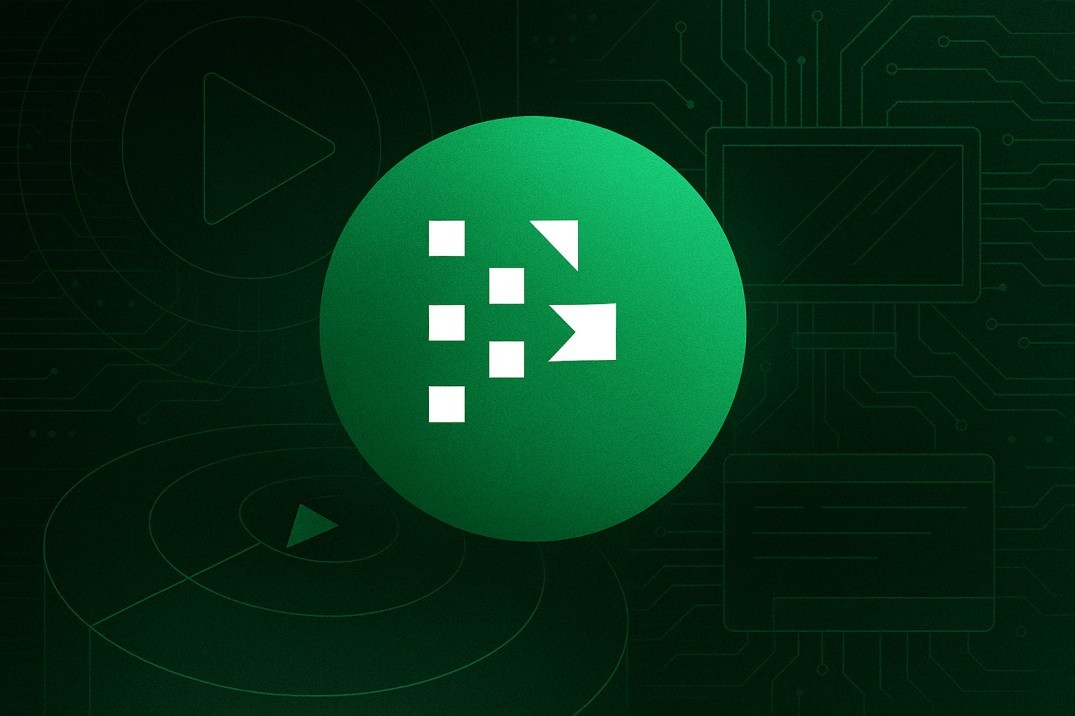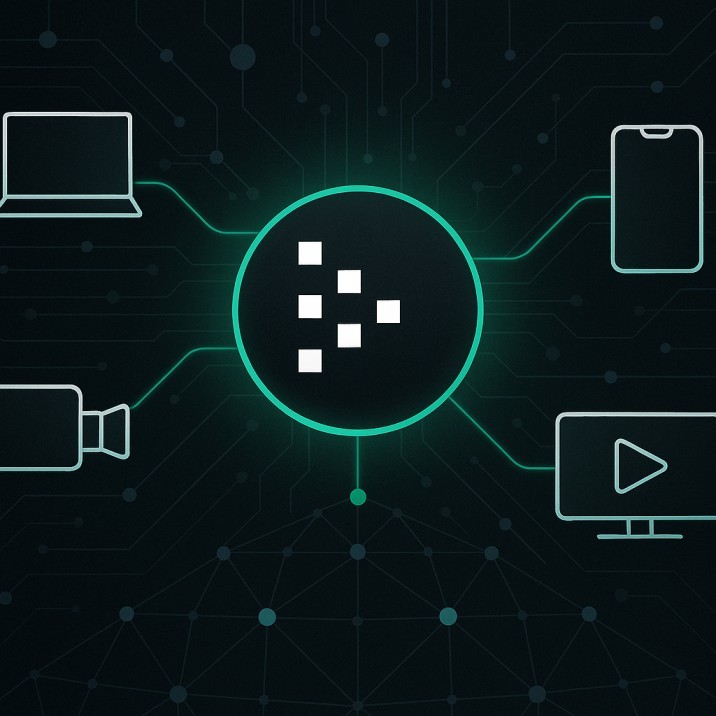TL;DR
- Livepeer is a decentralized video network that replaces expensive cloud encoding with open-source, blockchain-based infrastructure.
- LPT is the utility token that powers staking, rewards, and governance, users earn by running or supporting orchestrators.
- Orchestrators transcode video and receive ETH fees + LPT inflation, anyone can stake to back them.
- Used across Web3 apps, including decentralized social platforms, NFT live events, and blockchain gaming.
- Massively reduces cost of video streaming compared to AWS or traditional platforms.
- Governed by its community, with proposals and upgrades handled via on-chain voting.
Livepeer launched in 2017 as the first fully decentralized live video streaming protocol. It was built as a blockchain-based alternative to centralized platforms. Instead of relying on big media providers, Livepeer allows anyone to contribute computing power to transcode and distribute video-turning idle GPUs and bandwidth into a cost-efficient, open marketplace. Broadcasters submit raw streams, orchestrators convert them into multiple resolutions, and apps or users get access-all coordinated by the Livepeer protocol.
The platform is an open-source ecosystem supported by Livepeer Inc, founded by Doug Petkanics and Eric Tang. Their goal is to democratize the video infrastructure market, making streaming accessible, low-cost, and decentralized.
Founders and Background
Doug Petkanics studied computer science at the University of Pennsylvania and previously co-founded Hyperpublic and Wildcard before helping build Livepeer. Eric Tang studied electrical and computer engineering at Carnegie Mellon and also co-founded Hyperpublic. They aimed to reduce dependence on centralized media systems by introducing blockchain mechanics to media processing. Their collective experience spans developer tooling, startups, and infrastructure building.
How Livepeer Works

Roles in the Network
- Broadcasters submit video streams.
- Orchestrators stake LPT and run nodes that transcode video.
- Delegators stake their LPT behind orchestrators to earn rewards and help secure the network.
Orchestrators earn fees in ETH or stablecoins for processing video. Delegators earn a share, depending on how much LPT they delegate and the orchestrator's performance.
-
Staking and Inflation
Livepeer uses a delegated Proof-of-Stake (DPoS) model. Orchestrators must stake LPT to qualify for assignments; delegators support them by delegating tokens. The network adjusts inflation: if staking falls below 50%, new tokens are minted faster to encourage participation. That elasticity keeps security balanced with liquidity.
A "round" in Livepeer equals 5,760 Ethereum blocks (~17 hours). At the end of each round, LPT rewards are distributed to stakeholders. The inflation rate hovered at about 0.022% per round (~4.8% annual) in late 2024.
-
Slashing and Quality Control
Livepeer uses the Truebit protocol to verify that orchestration nodes actually do the work correctly. Only random segments of video are verified, keeping gas and time efficient. Failing checks or delivering low-quality output can lead to slashing: losing a portion of staked LPT. Delegators bond risk too-their stake follows the orchestrator.
Tokenomics of LPT
-
Supply and Allocation
Livepeer issued a fixed supply of ~27.28 million LPT hardcoded into the protocol. Livepeer implemented a flexible inflation model where token issuance rises or falls with staking participation.
Allocation at genesis included:
- Initial sale: ~63%
- Team/advisors: ~19%
- Early backers: ~10%
- Community treasury: ~8%
Team tokens vested over four years and unlocked by early 2022. A portion of the issuance finances network development and grants.
-
Use Cases
LPT serves three main roles:
- Bonding: Needed to become an orchestrator and process video.
- Governance: Stakeholders vote on upgrades, parameter changes, and treasury funding.
- Access coordination: Fees for video services are routed to orchestrators and delegators based on stake.
Unlike platforms where tokens pay for service, Livepeer uses ETH or stablecoins for broadcaster payments, while LPT secures and governs the system.
Governance & Network Decisions
Governance happens through a DAO model. LPT holders stake or delegate to gain voting rights on protocol changes, treasury use, node selection criteria, and incentive parameters. This distributed voting helps ensure transparency and collective control without centralized command.
Advantages Livepeer Offers

- Cost savings: Transcoding costs reportedly run up to 80% cheaper than centralized platforms like AWS IVS.
- Decentralized resilience: No single video host or vendor; work is distributed across many nodes.
- Staking model with aligned incentives: Slashing discourages bad behavior; delegators and orchestrators share rewards.
- Extensible jobs: AI processing, future video features, and new instrument types augment usage beyond basic streaming.
Adaptive inflation balances long-term security with token circulation.
Risks and Challenges
-
Delegator Concentration
Activity data shows that a few orchestrators control much of the stake rewards-top five nodes might earn nearly half of all staking rewards, even if they handle less of the transcoding load. That may centralize power in governance and operations.
-
Declining Participation
With participation below the 50% goal-despite rising rewards-the network risks under-securing its consensus. This trend may continue without barriers lowering for new delegators.
-
DPoS Limitations
DPoS networks can evolve into power structures where whales delegate to a few validators. Past networks saw rapid takeovers or coordination failures. Livepeer must remain vigilant against such capture or plutocracy.
-
Gas and Throughput Constraints
Until broader Ethereum roll-ups deploy, high gas costs may deter small broadcasters and new participants. Livepeer plans roll-up migration later in 2026 to mitigate this.
-
Technical Complexity
Staking, delegation, node operation, and slashing rules involve technical layers that may intimidate casual users. Better onboarding tools are crucial.
Use Cases and Developer Integrations
Broadcast as a service: Developers plug Livepeer into apps for live streaming without self-hosting.
Decentralized journalism & social video: Content can bypass censorship using Livepeer-powered apps.
Media DApps: Games, AI video tools, influencer platforms integrate transcoding features.
AI video compute: The AI Subnet allows jobs like captioning and object detection on-ramp into Livepeer.
Microservices extension: New features like watermarking, livestream analytics, or cross-platform distribution via smart contract modules remain under development.
Future Outlook
Through 2025-2026, key milestones include:
- AI Video Plugins (Q3 2025): Orchestrators can offer AI services as paid addons (e.g. object detection).
- Layer-2 Migration (Q1 2026): Settlement shifts to Base roll‑up, reducing user transaction fees.
- Cross‑chain FIAT pay-in (H2 2026): Accepting USDC or SOL at input and routing into LPT pools-broadening demand and usability.
Steady growth in transcoding volume, rising delegator count, and expansion of compute features will define Livepeer's next phase. Security, decentralization, and accessible onboarding remain core to its competitive stance.
Looking Ahead
Livepeer sits at the intersection of blockchain infrastructure and one of the internet’s biggest cost drivers: video. Rather than trying to build a consumer-facing app, it quietly supplies the backend that decentralized projects actually need.
Its approach also reflects a shift in Web3 economics. Instead of running massive data centers, Livepeer turns encoding into an open marketplace. This redistributes value from cloud monopolies to independent operators and stakers. If the next wave of apps from social to gaming, want to avoid the same gatekeepers Web2 had, Livepeer becomes less of an option and more of a requirement.
READ MORE : What is COTI V2: Revolutionizing Blockchain Privacy with Garbled Circuits











